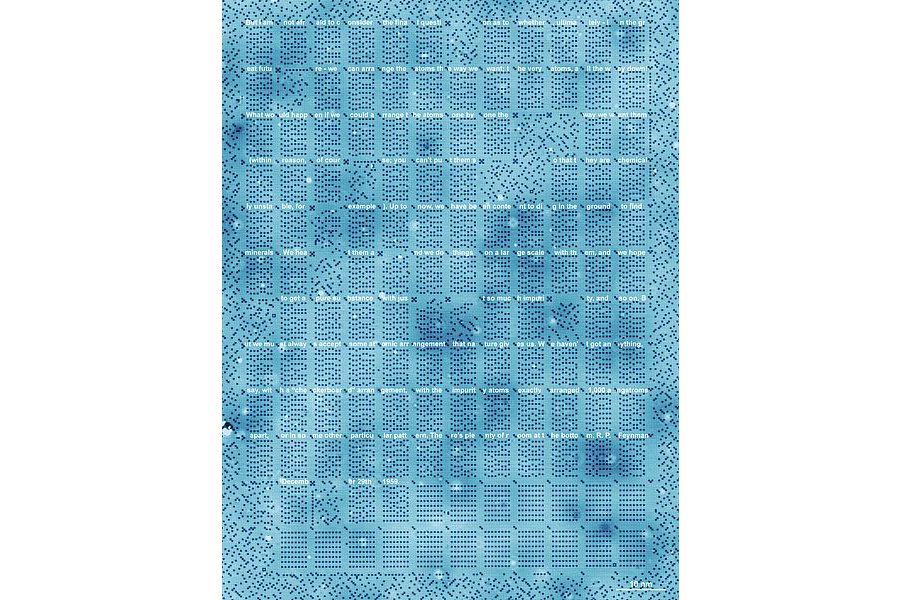How a tiny, atom-by-atom hard drive can offer 500 times more storage
Loading...
To store vast quantities of data, think small.
A team of researchers at Delft University of Technology in the Netherlands has found a way to write data atom-by-atom, in a method so efficient the data of all the books written in human history could be recorded on a surface the size of a postage stamp. That’s 500 times the storage density of hard disks available today.
In a breakthrough method described in the journal Nature Nanotechnology on Monday, researchers stored one kilobyte, or 8,000 bits of data by representing each bit by the position of a single chlorine atom.
To create their record-setting atomic hard drive, scientists dried a layer of chlorine onto a copper surface. The chlorine atoms naturally fall into a grid-like pattern, so scientists were able to identify 8x8 atom blocks. They left multiple blocks open within each grid, and holes for the missing atoms were viewable through a scanning tunneling microscope (STM).
Lead scientist Sander Otte told Mashable that the chlorine atoms bond to the copper via an ionic bond, holding them in place, but allowing them to be shifted into and out of the holes.
Every bit consisted of two possible positions on the surface of the copper atoms. A chlorine atom in the top position, with a hole beneath it represented a 1, and vice-versa for a 0. Scientists used the sharp needle of the scanning tunneling microscope to move the atoms into and out of vacancies, shifting the atoms in a way they described as comparable to operating a sliding puzzle in order to write bits.
With an atom-vacancy pair equaling one bit, the 8x8 grid of atoms formed a letter, and multiple grids added up to text.
The researchers were able to write, store, and read various texts, including Charles Darwin’s "On the Origin of Species," in their binary alphabet based on the positioning of holes over the course of minutes – a far cry from the 1 megabit per second for current hard disks. But Otte told Gizmodo that he doesn’t see a physical barrier to eventually reaching that speed with the atomic storage devices, though it will certainly be a technological challenge.
Another roadblock to utilizing atomic memory as a practical data-storing method is the fact it operates in clean vacuum conditions and at liquid nitrogen temperatures, -346 degrees F, Gizmodo reports. But now that chlorine and copper have proven their worth in storing texts, scientists hope to explore applying the principles to different atoms like iodine or bromine, which will potentially be more stable and able to operate in higher temperature.
Though the new hard drive won’t be hitting the shelves of Best Buy anytime soon, it proves the principle that will allow for the development of atomic-scale storage devices with increased improvements to atom-manipulating technology.
The kilobyte re-writable atomic memory demonstrates how well we can now organize the world with atomic precision, according to Dr. Otte. He told Gizmodo, “I cannot at this point foresee where this will lead, but I am convinced that it will be much more exciting than just data storage.”








